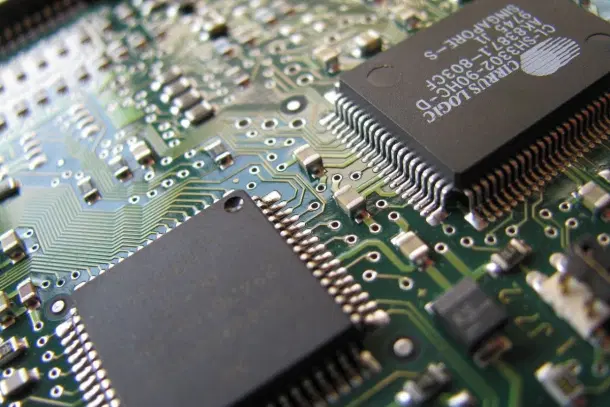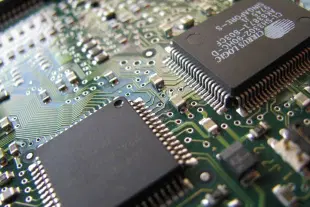Business
Japan To Shift Legacy Semiconductor, LCD And Battery Production To India To Reduce China Dependence: Report
Swarajya Staff
Aug 28, 2025, 03:12 PM | Updated 03:12 PM IST
Save & read from anywhere!
Bookmark stories for easy access on any device or the Swarajya app.


Japan and India are reportedly moving forward with plans to transfer production of older semiconductor and LCD screen technologies to India, as both nations seek to reduce their dependence on Chinese manufacturing and strengthen economic security cooperation.
The initiative focuses on so-called legacy technologies that rely on mature manufacturing tools and techniques rather than cutting-edge processes, Nikkei Asia reported.
These older semiconductors remain crucial for various applications, including voltage control in electric vehicles and inverters that improve energy efficiency in air conditioners and refrigerators.
A comprehensive plan developed jointly by the Japan External Trade Organization (JETRO) and the Confederation of Indian Industry is set to be unveiled Thursday.
The announcement comes ahead of Indian Prime Minister Narendra Modi's visit to Japan for a summit with his counterpart Shigeru Ishiba beginning Friday (29 August), where the economic security initiative is expected to be formally agreed upon.
According to the report, the plan states it will "promote transferring the production of goods that are losing capacity in Japan due to low-priced Chinese products to India, while reorganizing and expanding production capacity in India."
The scope extends beyond semiconductors to include liquid crystal displays, solar power equipment, storage batteries and compressors.
As part of the broader cooperation framework, India will also adopt legislation similar to Japan's that combats technology leakage, addressing concerns about intellectual property protection in high-tech manufacturing.
The timing of this partnership is particularly significant as India's electronics industry, while growing, still heavily depends on imports from China for core semiconductor components.
Prime Minister Modi has been pushing for domestic production of these critical components as part of his broader manufacturing strategy.
The production transfer plan comes at a time when India is navigating complex international trade relationships.
The United States has recently enacted an additional 25 per cent tariff on Indian goods due to New Delhi's purchases of Russian crude oil.
With the American "reciprocal" tariff of 25 per cent lifting the total levy to 50 per cent, India has started growing closer to China economically.
Japan's push to bolster ties appears aimed partly at preventing India from becoming more closely aligned with Beijing, offering an alternative partnership that could help India diversify its technology supply chains while maintaining strategic autonomy.
Several Japanese companies are already moving forward with initiatives aligned with the transfer plan.
A Japanese storage battery manufacturer is reportedly looking to sign a memorandum of understanding soon with an Indian company as a step toward joint production.
Additionally, a Japanese electrical machinery maker has begun construction of a compressor plant in the southern Indian state of Tamil Nadu.
For Japan, the arrangement offers an opportunity to maintain competitiveness in legacy technology markets while leveraging India's cost-competitive workforce.
The production transfer is considered relatively straightforward from both technical and cost perspectives, making it an attractive option for Japanese manufacturers facing pressure from low-priced Chinese alternatives.
For India, the partnership represents a significant step toward achieving manufacturing self-reliance in critical technology sectors.
New Delhi hopes to develop a mass production model that combines Japanese technological expertise with Indian cost competitiveness, potentially positioning itself as an alternative manufacturing hub to China.
Please click here to add Swarajya as your preferred and trusted news source on Google.





